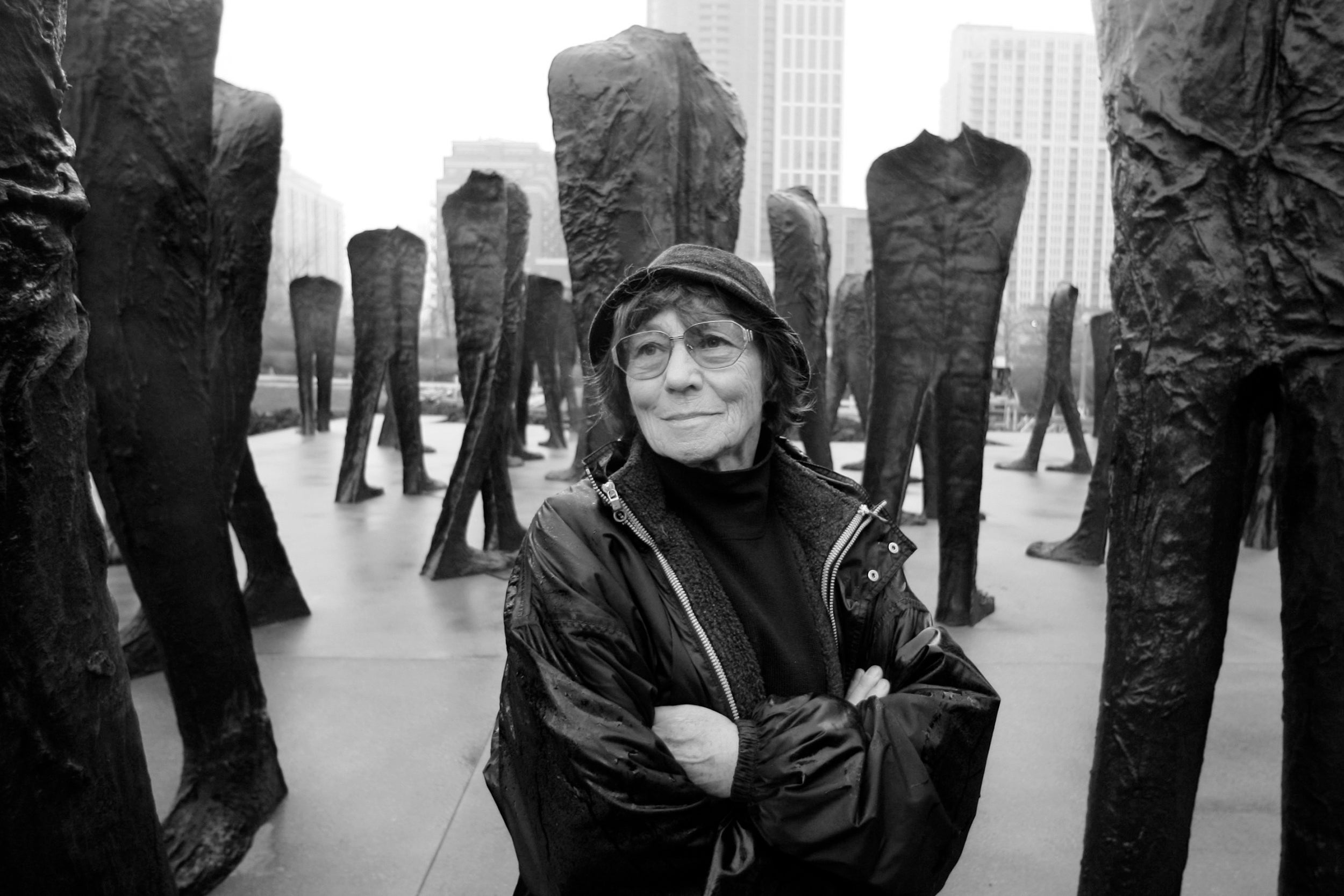Magdalena Abakanowicz, obituary: The Polish sculptor’s work
Her privileged upbringing came to an abrupt end when the Second World War broke out, but the talented artist managed to defy the odds, becoming a celebrated sculptor, despite resistance in communist Poland

Magdalena Abakanowicz, who has died at the age of 86, was a sculptor whose work spoke of freedom and repression. Her looming, headless figures and haunting, monumental textile configurations explored the human condition and the relationship between man and nature.
In Chicago’s Grant Park is Agora, 106 headless standing bodies, each nearly nine feet high. Its genesis, she said, lay in her experiences of the Second World War and the decades of communist rule she endured in her native Poland: “I lived in times which were extraordinary by their various forms of collective hate and collective adulation,” she said. “Marches and parades worshipped leaders, great and good, who soon turned out to be mass murderers. I was obsessed by the image of the crowd.”
Another series, Backs, was just that: pieces of sackcloth sewn together in representations of the human torso seen from behind, bent over in prayer, supplication or submission. “The face can lie,” she said. “The back cannot. I was asked by the public, ‘Is it about the concentration camps in Poland?’ ‘Is it a ceremony in old Peru?’ ‘Is it a ritual in Bali?’ To all these questions, I could answer yes because my work is about the general problems of mankind.”
She was born Marta Abakanowicz in 1930 into an aristocratic family in Poland – her father, the son of a Czarist general, claimed to be descended from Genghis Khan, while her mother came from Polish nobility – and she was raised on her grandfather’s estate 125 miles from Warsaw.
Her privileged upbringing came to an abrupt end when the Second World War broke out: drunken German soldiers broke into their house and shot her mother, Helena, in the arm, severing it. The family survived, but fled to Warsaw when Soviet troops began their westward advance on Berlin, and Marta worked as a nurse’s assistant treating the wounded during the failed Warsaw Uprising.
At war’s end, as the Communists took over, the family, fearing class war, fled from the capital and established themselves near Gdansk, where Marta – who changed her name to Magdalena to break with her past – studied art. Pretending to be a clerk’s daughter, she then enrolled at the Warsaw Academy of Fine Arts, but by then the state-enforced socialist realism was in full swing, and she was turned down for the sculpture course, and concentrated instead on watercolours and gouache works daubed on bedsheets: “It was almost forbidden to talk about mystery,” she recalled. “I did.”
In 1965 she married an engineer, Jan Kosmowski (who survives her). Unsurprisingly, she encountered much resistance to her work from the Polish authorities. In 1960 one of her shows was banned from opening after an official, displaying spectacular and presumably wilful wrong-headedness, condemned it as “formalist” – concerned purely with form. But she established an international reputation and began working increasingly abroad. In 1972 she wrapped Edinburgh Cathedral in coils of rope to resemble, she said, “a petrified organism.”
In Britain her work can currently be seen at the Tate Modern in London (and her huge work Ten Seated Figures can be viewed at the Yorkshire Sculpture Park). Embryology is an example of what she called her “Abakans”, woven pieces made from sisal taken from ships’ ropes, hemp and cotton gauze, pieces she described as “monumental, soft and erotic”. In Embryology, the pieces are like boulders strewn across the gallery in mounds. “I turn sculpture from an object to look at into a space to experience,” she said. “Every sculpture can be turned into decoration. But if you have 100, you are confronted by them and must think and imagine and question yourself. This is what I want.”
Subscribe to Independent Premium to bookmark this article
Want to bookmark your favourite articles and stories to read or reference later? Start your Independent Premium subscription today.

Join our commenting forum
Join thought-provoking conversations, follow other Independent readers and see their replies